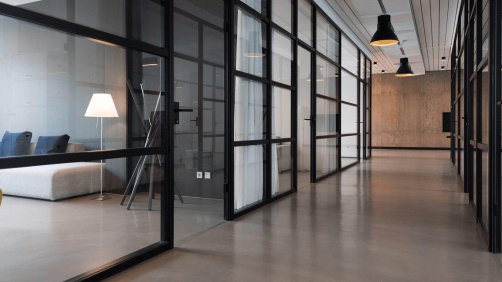The average American works 8.8 hours a day but is productive for only two hours and 53 minutes.
According to the Bureau of Labor Statistics, the remaining time is spent engaging in pointless pursuits like reading the news (1 hour), checking social media (44 minutes), conversing with coworkers about unrelated topics (40 minutes), and consuming snacks or drinks (33 minutes).
What this means: Being present is not the same as being productive. The fakeness of work was in full display in pop culture shows like The Office.
Get smart: Our forced experimentation with work from home has inspired a new way of life in which we no longer worship at the altar of the office for self-worth.
The fact that the numbers of workers returning to the office rate has plateaued at a rate around half that of before the pandemic speaks to the appeal of remote and hybrid work arrangements.
Why it matters: Commercial real estate was struggling due to declining property values. In the wake of SVB’s failure, it now faces the additional risk of banks restricting credit to commercial borrowers.
The bad news: More than $2.5 trillion in commercial real estate debt will mature over the next five years. The delinquency rate for office loans that back commercial-mortgage-backed securities is historically low but on the rise.
Landlords that have defaulted include Pimco and Brookfield Asset Management.
Some context: Commercial real estate includes offices, apartments, hospitals, hotels, warehouses, data centers, and retail spaces. They all have different fundamentals. Demand might be slack for retail and office space but not everything is bleak.
The good news: Office properties only account for about 25 percent of the maturing debt coming due, or roughly $125 billion each year. CRE leases tend to be long-term so the stress on the office sector will likely take years to resolve.
And it’s not as if the commercial real estate industry has been propping up the US economy. As a share of GDP, investment in nonresidential structures is at its lowest level in 20 years, down 40 percent from 2007.
ICYDK: Office REITs, which make up 8 percent of all REITs, have underperformed the REITs index by 50 percent since the pandemic. Both Vornado Realty (VNO) and Boston Properties (BXP) are trading at their lowest levels since 1996 and 2009, respectively.
Our concern: During every Fed rate hike cycle, money-market funds have attracted inflows as retail and institutional investors seek higher yields.
Money-market funds took in $400 billion during the 1999-2000 tightening cycle (with another $300 billion during the 2001 recession); in the 2004-2006 cycle, $1.2 trillion (increasing by $1 trillion during the 2008 recession); and in the 2016-2018 cycle, $600 billion (rising another $1.4 trillion during the pandemic).
The amount of money parked at money-market funds has climbed by $700 billion since the Fed began hiking rates a year ago.
It would be entirely typical to see hundreds of billions of dollars more flowing in. There is a chance it will fuel further anxiety regarding deposit flight and a credit crunch.
What to watch: The S&P 500 remains stuck between 3700 and 4100. A move to the lower end of the range would not surprise us if the Financials ETF (XLF) broke the crucial $31 support level. The market discerns the future.







